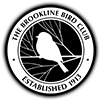Binoculars 101
by Steve Grinly
Today’s optics are lighter, brighter, and sharper than they were even ten years ago. You don’t need to start out with the best optics, as there are some fine lower priced binoculars, and you can always graduate to better optics as your interest grows. Or, as most experts advise, you can invest a little more money now and buy the best optics that you can afford and they will bring you many years of enjoyment.
The most popular size binoculars for birding are 8×42 or 10×42. Binoculars with magnification of 8 or 10 power, the first number that you see printed on the binoculars, will bring birds 8 or 10 times closer. Higher power may sound better, and it can be, but the higher the magnification, the harder it is to hold binoculars steady: they can be heavy! The lower power usually gives you a little more light, and a wider field of view. The wider the field of view, the easier it is to find a bird in a tree, because you are seeing more of the tree. Ten power does bring birds closer, but it is the practical limit that experienced birders can hold steady without the aid of a tripod.
The second number (i.e. 42) is the diameter of the objective lens, the lens that is furthest away from you, in millimeters. The larger that lens, the more light that enters the binoculars. More light is important when birding in the shade, on cloudy days, or at dawn or dusk. Some people use 8×50 or 10×50 binoculars because a larger objective lens lets in a lot of light. But the added weight of that much more glass in a binocular is often more than most want to carry around all day.
Be careful of going to the other extreme with small compact binoculars such as 8×20 or 10×25. Compacts are great for hiking or for a second pair to keep in your car, but they are not very useful for general field use. The small objective lens limits both the field of view and the brightness of the image.
Other factors to consider are the close focus (how close you can focus to see birds and butterflies 5 feet away), waterproof capability (for birding in the rain, in the tropics, or in a kayak), and eye relief (important for eyeglass wearers to be able to have the full field of view of the binoculars). Binoculars vary greatly and these factors, as well as how they feel to you, is important! It is best to try them before you buy them, not only to match the binoculars to your needs, but also to get the one that feels good to you ergonomically.
Visit a store that specializes in binoculars and carries a wide variety of makes and models in all price ranges. You are welcome to stop by Bird Watcher’s Supply & Gift in Newburyport, which has a wide selection of binoculars and spotting scopes,and can answer your questions about optics. They also offer substantial discounts to BBC members. Or visit them at their website: www.birdwatcherssupplyandgifts.com.
[/fusion_text]